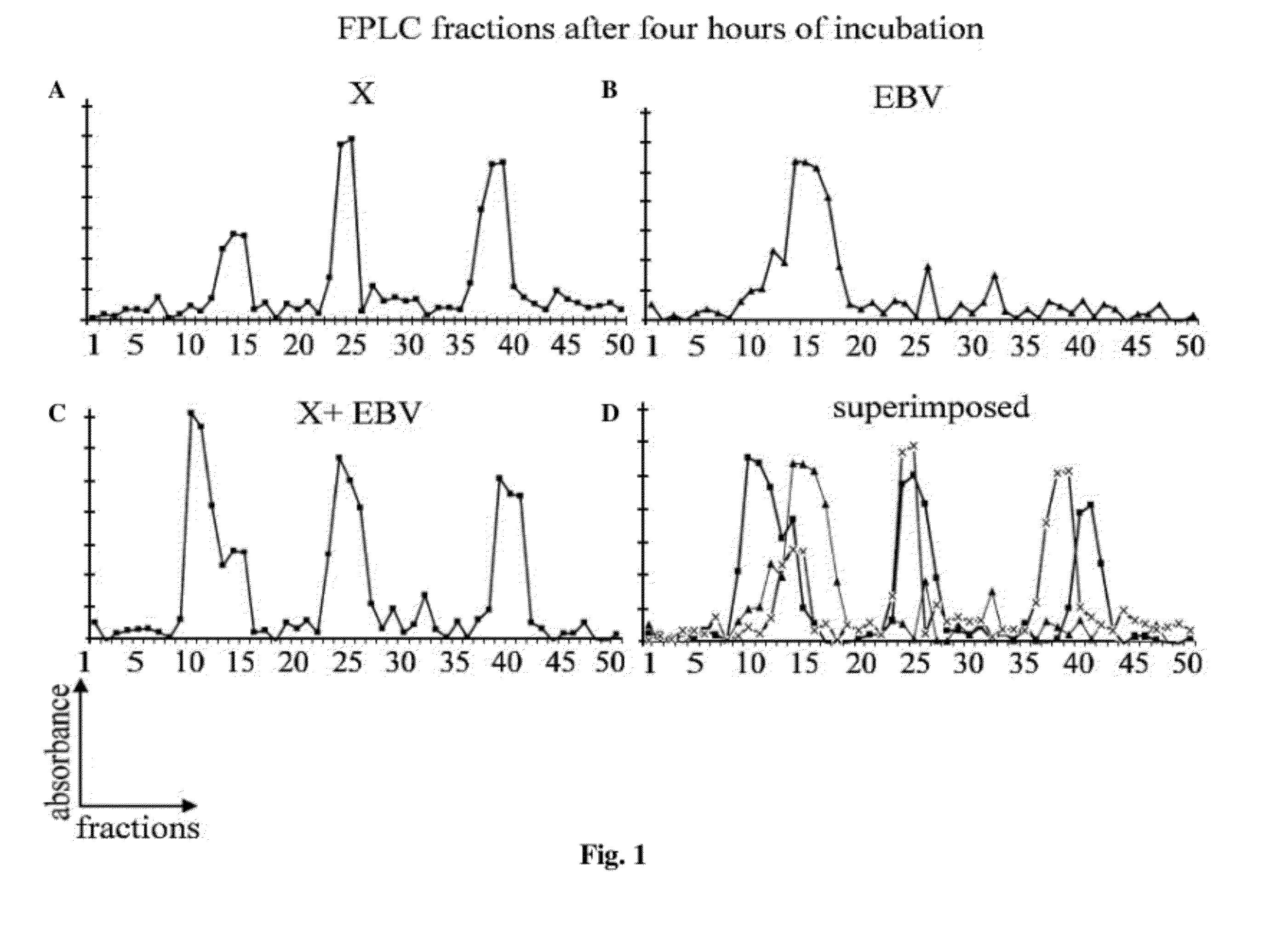Methods of detecting susceptibility to leukemia/ lymphoma and induction of leukemia and lymphomas
a technology of leukemia and lymphoma, applied in the field of medical diagnostics, can solve the problems of insufficient uncertainty, inability to consistently apply the above factors to a majority of cases, and the probability of inducing leukemia, so as to increase the inductive ability of aspergillus flavus first-peak, and enhance the first peak of aspergillus flavus protein
- Summary
- Abstract
- Description
- Claims
- Application Information
AI Technical Summary
Benefits of technology
Problems solved by technology
Method used
Image
Examples
example 1
[0052]Four isolates of aspergillus flavus were collected from separate homes of patients diagnosed with ALL over a period of 45 years. All four isolates proved to have identical properties and similar effects on cell transformation. Therefore, filtered supernatant of only one isolate (UGB), characterized by its high growth rates, was utilized for the entire described studies. The “UGB” isolate was cultured in a glass bottle containing an under layer of 1% solid agarose (Aneresco, Solon, Ohio) in water with an over layer of 3.5% Czapek-Dox broth (Difco, Becton Dickenson, Sparks, Md.). Cultures were incubated at 37° C. in ambient air. Supernatant of the cultures were harvested when confluent growth of aspergillus flavus was achieved, usually on an every two week basis. The supernatant was filtered in a 0.25 μm filter (Corning Inc, Corning, N.Y.) and stored in a refrigerator at 4° C. until used.
[0053]EBV type 2 Burkitt's lymphoma Jijoye cell line (CCL-87) and owl monkey B-lymphoblast c...
example 2
[0060]Subject to parental / patient consent, approximately 15 ml of blood was obtained from leukemic patients in remission, long-term survivors of leukemia and normal volunteers. Additional “normal” control samples were collected from the first drawing of blood in sickle cell patients undergoing manual partial exchange transfusion, or samples of blood discarded by the blood bank from normal donors. Patient blood was placed into heparin (1000 USP u / ml). Peripheral blood mononuclear cells (PBMC) were isolated by density gradient centrifugation (400×g, 40 minutes, and 18° C.) with Ficoll Paque Plus (GE Healthcare, Amersham Biosciences; Uppsala, Sweden), followed by washing with phosphate-buffered saline. Plasma was also collected simultaneously and stored at −80° C. until use. Density gradient-isolated PBMC were resuspended in ice-cold fetal bovine serum with 10% dimethyl sulfoxide (DMSO) at 107 cells / ml. Aliquots of cell suspension (1.0 ml) were made in cryovials and immediately transfe...
example 3
[0073]For ELISA studies, subject to parental / patient consent, approximately 15 ml of blood was obtained from leukemic patients in remission, long-term survivors of leukemia and normal volunteers. Additional “normal” control samples were collected, subject to consent, from the first drawing of blood in sickle cell patients undergoing manual partial exchange transfusion. Additionally, discarded blood from the blood bank was used as control. Patient blood was placed into heparin (1000 USP u / ml). Plasma was also collected simultaneously and stored at −80° C. until used.
[0074]A qualitative sandwich ELISA was performed to detect antibodies in plasma samples against antigens in various conditioned media. Briefly, 96 well microtiter plates were coated with 100 ml of either media, XRT, CCL-87 supernatant or CRL-2312 supernatant or a combination of XRT and CCL-87 supernatant and incubated overnight at 4° C. Plates were then blocked with 2% BSA in PBS for 2 hours at 37° C. Serum samples (100 μ...
PUM
 Login to View More
Login to View More Abstract
Description
Claims
Application Information
 Login to View More
Login to View More - R&D Engineer
- R&D Manager
- IP Professional
- Industry Leading Data Capabilities
- Powerful AI technology
- Patent DNA Extraction
Browse by: Latest US Patents, China's latest patents, Technical Efficacy Thesaurus, Application Domain, Technology Topic, Popular Technical Reports.
© 2024 PatSnap. All rights reserved.Legal|Privacy policy|Modern Slavery Act Transparency Statement|Sitemap|About US| Contact US: help@patsnap.com










